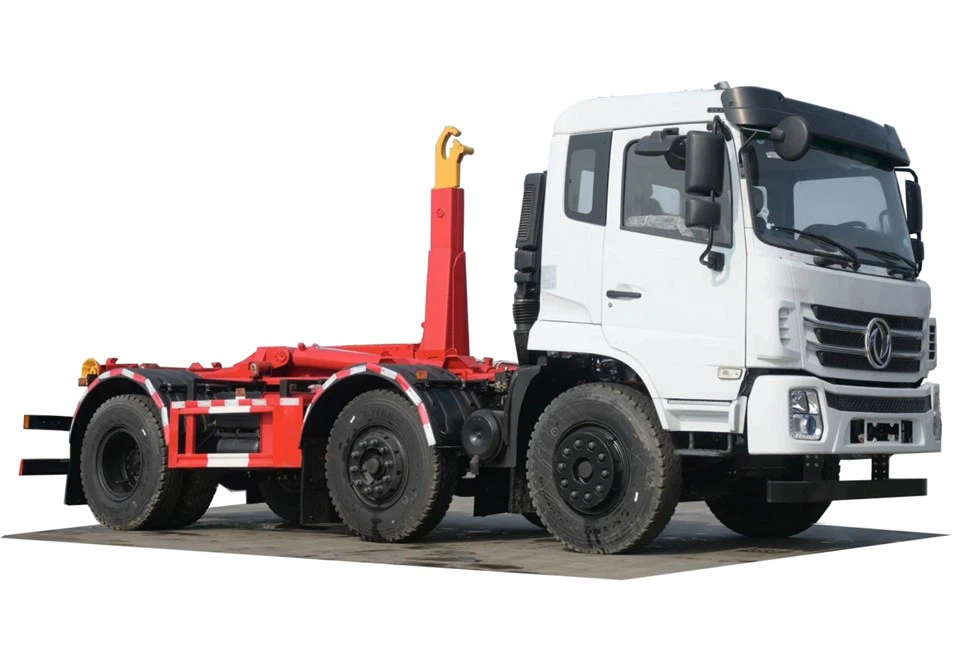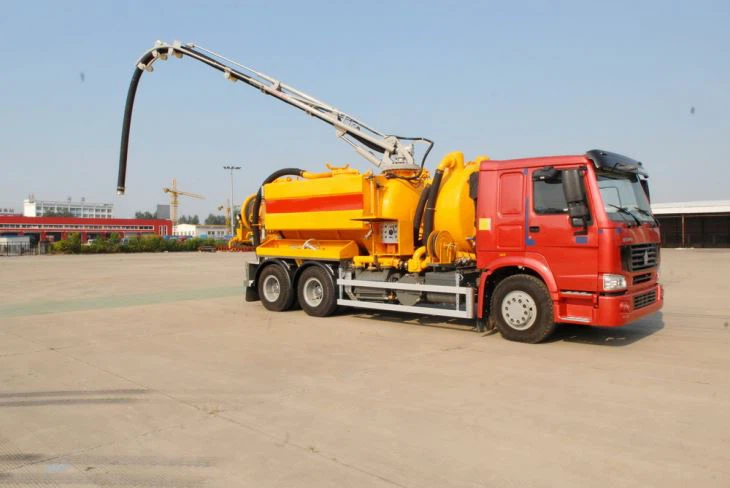Everything You Need to Know About Truck Heads: A Complete Guide

Truck heads play a critical role in the logistics and transportation industry, providing essential power and functionality to heavy-duty transportation. In this comprehensive guide, we will delve into the different aspects of truck heads, including their types, features, maintenance, and much more. Whether you are a fleet operator, a logistics expert, or simply curious about the trucking industry, this article will equip you with valuable insights.
What is a Truck Head?
A truck head, also known as a prime mover, is a type of vehicle designed to tow a trailer. It serves as the front part of a vehicle combination, consisting of the cab and the engine, while the trailer is used for carrying cargo. Truck heads are crucial for the transportation of goods over long distances, making them a backbone of the logistics industry.
Key Components of a Truck Head
- Engine: The powerhouse of the truck; typically, large displacement diesel engines.
- Chassis: The frame that supports all components and provides structure.
- Cab: The driver’s compartment which contains controls, seating, and comfort features.
- Axles: Support the weight of the truck head and facilitate movement.
- Wheels and Tires: Essential for traction and weight distribution.
Types of Truck Heads
Truck heads come in various configurations to suit different needs and applications. Here are some of the most common types:
1. Conventional Truck Heads
Conventional truck heads, also known as “long-nose” trucks, feature a distinct design where the engine is located ahead of the driver. They are popular for long-haul trucking due to their aerodynamic shape and better visibility.
2. Cab Over Truck Heads
Cab over trucks (COE) have the cab situated over the engine. This design improves maneuverability and allows for a shorter vehicle length, making them suitable for urban deliveries.
3. Heavy-Duty Truck Heads
These trucks are built to pull heavy trailers and carry significant loads, often seen in construction, mining, and large-volume transport operations.
4. Medium-Duty Truck Heads
Medium-duty truck heads are designed for moderate cargo loads and are typically used for regional transportation. They balance power with fuel efficiency.
5. Light-Duty Truck Heads
These are smaller and lighter vehicles, often used for local deliveries or as service vehicles. They can be equipped with various bodies for different applications.
Features to Consider When Choosing a Truck Head
Selecting the right truck head requires careful consideration of various features. Here are some critical factors to consider:
1. Engine Capacity
The engine capacity affects towing power and fuel efficiency. Choose an engine that meets your specific hauling needs without excessive strain.
2. Transmission Type
Truck heads can be manual or automatic. Automatic transmissions are easier to drive, while manual transmissions provide better control and typically better fuel economy.
3. Axle Configuration
Truck heads generally come with various axle configurations, such as 4×2, 6×4, or 8×4, affecting load-bearing and stability.
4. Payload Capacity
Ensure that the truck head can handle the maximum payload required for your operations, factoring in trailer weight.
5. Fuel Efficiency
Evaluate the fuel efficiency rating, as fuel costs play a crucial role in the operational budget of trucking businesses.
Maintenance and Care for Truck Heads
Regular maintenance is vital for ensuring the longevity and performance of truck heads. Here are some essential maintenance tips:
1. Regular Inspections
Conduct routine inspections to check for any signs of wear and damage. Pay attention to tires, brakes, and engine components.
2. Oil Changes
Frequent oil changes are necessary to keep the engine running smoothly. Follow the manufacturer’s recommendations for oil change intervals.

3. Tire Care
Inspect tire pressure regularly and rotate tires to ensure even wear. Replace tires when they show signs of tread wear or damage.
4. Brake Maintenance
Check brake pads and fluid levels regularly. Replace worn brake components promptly to maintain safety.
5. Cleanliness
Keep both the interior and exterior clean to prevent wear and tear. Regular washes can also prevent rust and corrosion.
Real-Life Examples of Truck Head Applications
Truck heads are versatile and can serve multiple functions. Here, we present a few examples of how truck heads are utilized:
1. Long-Haul Trucking
Long-haul trucking typically involves moving freight across states or countries. For instance, a trucking company might use a conventional truck head equipped with a 53-foot trailer to transport goods from California to New York.
2. Urban Delivery Services
Companies specializing in local deliveries often use cab over truck heads for maneuvering through city traffic and narrow streets, allowing for efficient service amidst logistical challenges.

3. Construction Sites
Heavy-duty truck heads are commonly used on construction sites to transport materials such as concrete, steel, and heavy machinery. Their robust design allows them to haul significant loads across rough terrains.
4. Food and Beverage Distribution
Medium-duty truck heads can be engaged for food and beverage distribution, carrying temperature-controlled trailers to deliver fresh produce and perishable items efficiently.
| Type of Truck Head | Best For | Key Features |
|---|---|---|
| Conventional | Long-haul trucking | Aerodynamic design, larger cabs |
| Cab Over | Urban deliveries | Increased maneuverability, shorter length |
| Heavy-Duty | Construction and mining | High towing capacity, durable |
| Medium-Duty | Regional transport | Balance between power and efficiency |
| Light-Duty | Local deliveries | Smaller size, versatile body types |
Fuel Efficiency Tips for Truck Heads
Fuel is often one of the most significant expenses for truck operators. Here are some tips to improve fuel efficiency:
1. Proper Load Distribution
Ensure that the cargo is evenly distributed across the trailer to reduce strain on the truck head and improve stability.
2. Maintain Optimal Speed
Avoid rapid acceleration and braking, as this can decrease fuel efficiency. Operating at a consistent speed can save fuel.
3. Regular Tune-Ups
Keep the engine and other components well-maintained. Regular tune-ups can help in identifying issues that may affect efficiency.
4. Aerodynamic Enhancements
Consider installing aerodynamic features such as wind deflectors which can reduce drag and improve fuel efficiency.
Legal Regulations and Compliance for Truck Heads
Various regulations govern the operation of truck heads. Adhering to these laws is essential for safety and compliance:
1. Weight Limits
Ensure that your truck head and trailer do not exceed the maximum allowable weight limits, which vary by state and road type.
2. Licensing Requirements
Drivers operating truck heads require commercial driver’s licenses (CDLs) with appropriate endorsements, depending on the size and type of vehicle.
3. Emission Standards
Many regions enforce emission standards to reduce pollution from heavy-duty vehicles. It’s crucial to ensure compliance to avoid hefty fines.
Frequently Asked Questions
1. What is the average lifespan of a truck head?
The average lifespan of a truck head can be between 10 to 15 years, depending on maintenance and usage patterns.
2. How much can a truck head tow?
Most truck heads can tow between 30,000 to 80,000 pounds, depending on their design, specifications, and axle configuration.

3. What should I look for when buying a used truck head?
When buying a used truck head, consider mileage, maintenance history, condition of the engine, and any signs of damage or wear.
4. Are automatic truck heads more fuel-efficient than manual?
While automatic truck heads are easier to operate, they generally do not offer better fuel efficiency compared to well-maintained manual versions. However, advancements in technology are narrowing this gap.
5. Can I modify my truck head for better performance?
Yes, many modifications can improve performance, such as tuning the engine, improving aerodynamics, and upgrading tires. However, ensure that modifications comply with regulations.
6. What are the common brands of truck heads?
Some popular truck head brands include Freightliner, Kenworth, Peterbilt, Volvo, and Mack. Each brand has its strengths and ideal applications.
